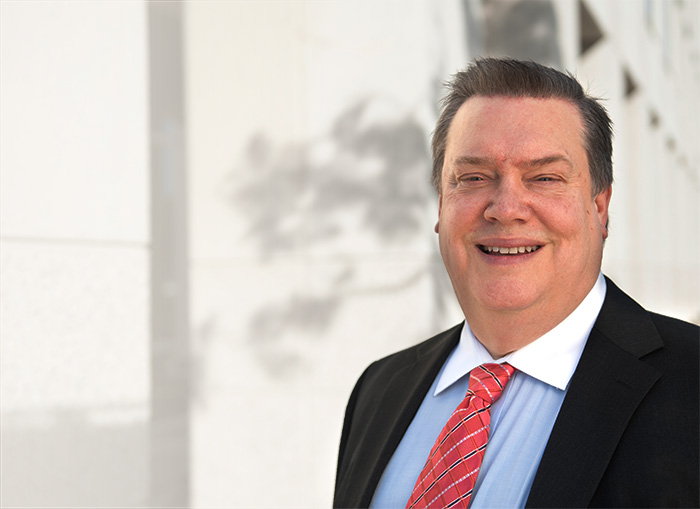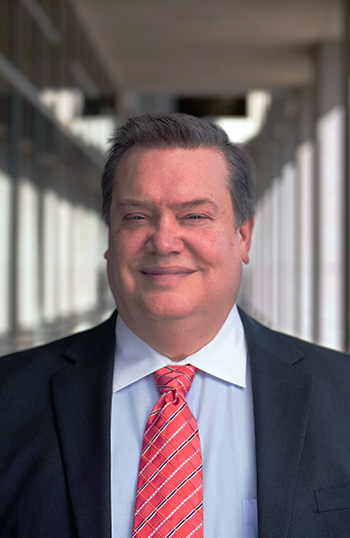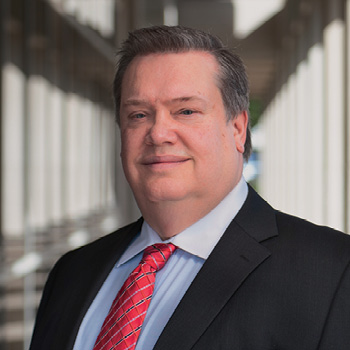A global view of risk

Richard Beidl, RFC • Irvine, CA
Phi Beta Kapital Investments
Read full biography below
Proactive Advisor Magazine: Richard, can you give an overview of your practice philosophy?
Our firm has adopted a holistic approach to financial planning and investing. This time-tested approach has proven to be less volatile and have better performance over time for people who are serious about wanting to reach their retirement goals. We’ve then used our knowledge of, and access to, unique products and strategies to refine this approach for our clients.
We approach everything from a risk-managed perspective. Our goal is to exceed market performance over time with substantially lower risk and volatility, and to plan effectively for tax and inflation uncertainty. We offer diversification both within and across asset classes that can help minimize the volatility of major market corrections and offer solutions when clients face tax-law changes and unexpected life events.
As an independent firm, we are not limited to any single financial-product provider, but are free to search the marketplace for solutions that best suit each client’s unique needs. The combination of these various facets is a meaningful differentiator for our practice.
Define holistic planning.
This next statement may be an exaggeration, but I believe there is some truth to it. Insurance-focused representatives tend to steer you away from the equity markets, saying they are too dangerous—insurance and annuity products are a much better way to go in their opinion. Registered representatives and most investment advisors will typically focus heavily, if not exclusively, on the investment side of things—they will tend to minimize the insurance planning piece and believe you will do much better in the long run in the stock market. Both of these perspectives are misguided.
The realities are that if you’re going to spend 25 or more years in retirement, a well-crafted financial plan incorporates all different types of instruments. These include different types of tax-advantaged strategies, different types of insurance and investment strategies, and a thorough look at potential distribution scenarios. It also takes into consideration all of the goals, financial realities, tax ramifications, and potential life events that an individual or couple may encounter. This, we believe, is the best way to structure an overall financial plan.

“If our investment strategy says all of the market indicators are negative and we should go to cash, we can do that. A mutual fund typically cannot.”
We are dealing with more uncertainty over a longer period of time than any previous generation. A simple monoline focus isn’t in the best interest of the client. To us, the only way to really give a client a true perspective of their overall picture and make sure that the pieces work together is to have a holistic approach. It is like going to a doctor who is only going to look at one part of your body and not consider all of your health issues when making a diagnosis or referral.
Where does risk management fit into the equation?
My background is very broad and covers several different areas in financial services—from mortgage lending to international finance to consulting to data and research analysis. My training originally was as a financial engineer, and I have been involved deeply in very sophisticated risk analysis and risk management for major financial institutions and organizations.
When I made the transition to wealth management, it was natural that I would bring a strong risk orientation to working with our client base. I take a global view of risk, whether it is inflation risk, macroeconomic risk, sequence-of-returns risk, or the more traditional risk or stress-testing associated with various investment strategies.
The most important aspect of risk management is putting all of these factors together in our analysis of the question that is uppermost on most clients’ minds. Specifically, they first want to make sure they have adequate income to live comfortably throughout their retirement. At the next level, they want to see how they can put their assets to work to achieve their aspirational goals and dreams. In the final analysis, it is not money itself that is important, it is how it can help you realize the objectives important to you and your family. For our more affluent clients, the preservation of their wealth (avoiding losing money), and leaving as much to their heirs, is often the greater driving force.
How do you integrate that risk perspective into managing clients’ investments?
First, there is a fairly heavy education component. Most of my clients are what I would call mass affluent—they are intelligent and well-educated people. But I know, and research such as DALBAR confirms, that many people have been indoctrinated over the years to think about investments in a very stereotypical way. For most of their lives they have been told that a passive approach to buying stocks or mutual funds is a sound strategy. The problem with that is what happens when markets go into sharp downturns or bear markets. People might make very poor decisions in times of stress, or they have not considered the impact of sequence-of-returns issues—taking losses when they can least afford to do so.
So, in many cases, I have to introduce people to the advantages of an active-investment approach. It is possible to achieve returns that are competitive over the long run, with much lower volatility associated with a portfolio. We use managers with quantitative strategy models that are time-tested and based on algorithms. These models will not necessarily outperform the market in bull markets, but there is a goal of mitigating large portfolio losses. That is what is truly important to clients today—preserving capital while still having reasonable opportunities for asset growth.
How do clients respond to that message?
Very favorably. I like to explain it using a few simple analogies. Here is one example I like to tell clients: If you sent a large ocean-going tanker from London to New York on autopilot, it would just continue on its course regardless of adverse conditions. If there are severe storms, or icebergs, or mechanical breakdowns, it might just keep going and suffer the consequences. Would it make any sense to run a shipping company that way?
Active management is like putting a smart and nonemotional pilot at the helm who has access to very sophisticated control mechanisms. We lose far fewer tankers because, when storms come, we can go around them or seek shelter. We can move in several directions. We can probably steer around the iceberg. We have instruments to monitor changing conditions and to react in time. We have the ability to truly, actively manage. If our investment strategy says all of the market indicators are negative and we should go to cash, we can do that. A mutual fund typically cannot.
Even the best quantitative strategy is not 100% perfect, and it is not always right in terms of timing or direction. But it doesn’t have to be 100% right. Because when it is not firing on all cylinders, it is still working to limit losses. When it is functioning at a high level, it is working to capture as much of the upside in the markets as possible. As clients come to see the wisdom in that approach, many will understand that it fits very well with their long-term objectives. Having an investment approach that is unbiased and aligns client objectives with the principles of our firm is a strong differentiator. This helps us achieve solid and enduring client relationships.
 Richard Beidl is a financial services industry analyst, consultant, speaker, and strategist. He is president of Phi Beta Kapital Corporation (formerly Impact Partners Inc.), a financial firm specializing in strategic financial planning, wealth management, and financial education. Mr. Beidl is also president of Phi Beta Kapital Investments, a California registered investment advisory firm, and My Local Tax Center, a tax planning and preparation firm.
Richard Beidl is a financial services industry analyst, consultant, speaker, and strategist. He is president of Phi Beta Kapital Corporation (formerly Impact Partners Inc.), a financial firm specializing in strategic financial planning, wealth management, and financial education. Mr. Beidl is also president of Phi Beta Kapital Investments, a California registered investment advisory firm, and My Local Tax Center, a tax planning and preparation firm.
After many years with large financial institutions, consultants, and financial product and technology providers, Mr. Beidl founded his own independent firm in 2005 and his own registered investment advisor in 2013. His focus is on helping retirees, pre-retirees, and business owners to reach their financial and retirement goals. The hallmark of his services, he says, is “risk management across the board.”
Mr. Beidl has over 30 years’ experience in consumer banking, financial planning, securities risk management, and mortgage lending. He attained a Bachelor of Science degree in management and finance from the University of Massachusetts, graduating summa cum laude. He also earned a Master’s of Business Administration from the Massachusetts Institute of Technology (MIT) in financial engineering and strategy, and has the professional designation of Registered Financial Consultant (RFC). Mr. Beidl frequently shares his expertise through industry research papers, articles, and speeches.
Although deeply involved in expanding the network of offices for his firm, Mr. Beidl says he and his wife “are very active and love living in Southern California, with all it has to offer.” They have one adult daughter who works and resides in the New York City area.
Disclosure: Richard Beidl is an Investment Advisor Representative and president of Phi Beta Kapital Investments Inc., a Registered Investment Advisor. Mr Beidl holds a Master of Business Administration degree from the Sloan School at the Massachusetts Institute of Technology (MIT) in Financial Engineering. Securities transactions for Phi Beta Kapital Investments Inc. clients are placed through Folio Institutional, Flexible Plan Investments at Trust Company of America, Envestnet at TD Ameritrade, and Jefferson National.
Photography by Ed Carreόn

